Where do people live?These marvelous spike maps mark out a 3D representation of the population density on each two-kilometer-square pixel of Earth's surface. There are no outlines for countries, yet for the most part we can still see where the land meets the sea.
Credit goes to
Alistair Rae, formerly a professor of urban studies and planning at the University of Sheffield. He used the EU's population density data with the mapping tool Aerialod to create these glorious 3D maps.
And the map shouts "India".
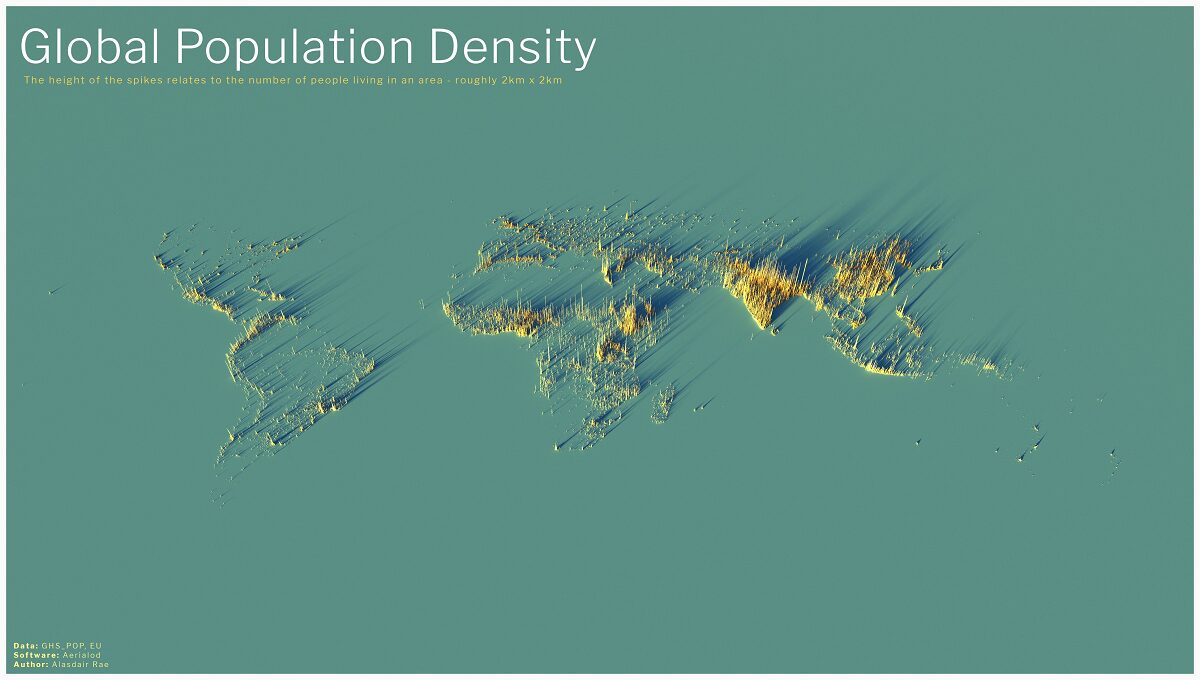
© Visual Capitalist
This is the global distribution of 8 billion people. The abundance of South East Asia is undeniable, as is the emptiness of the Sahara and the vacancy of Siberia. Antarctica is an invisible continent.
Australia and New Zealand are barely there. We can see how isolated Perth Australia is (where I live).
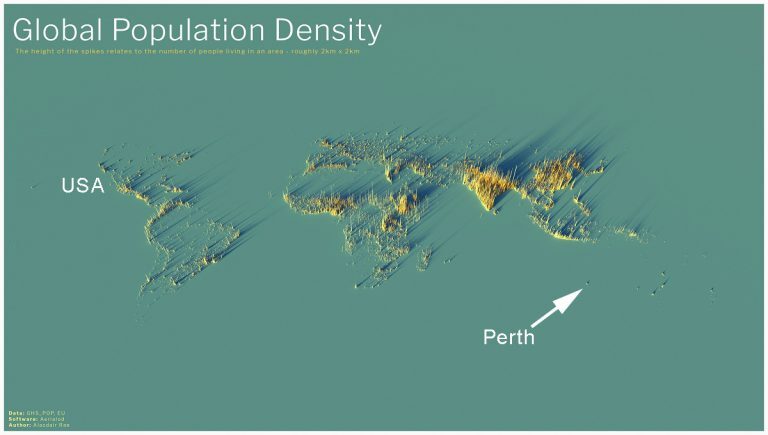
© Visual Capitalist
Hawaii and Auckland likewise, stand apart.
Most maps originally came from
Alastair Rae on Twitter in 2020 and later from the
Visual Capitalist team which explains:
The height of each bar represents the number of people living in that specific square, with the global map displaying 2km x 2km squares and subsequent maps displaying 1km x 1km squares.
The USAFifty million people live in the zone that stretches from Washington to Boston.
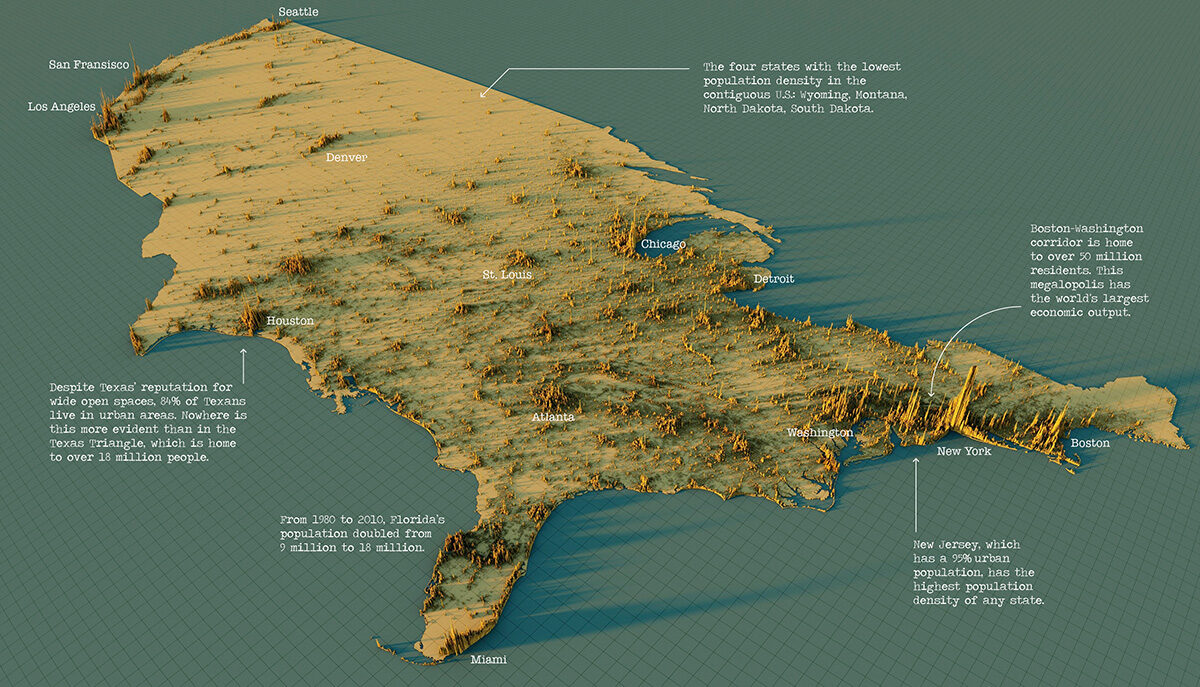
© Visual Capitalist
60 million people live in the conglomerate spikes of Ghangzhou, Shenzhen and Hong Kong.
Otherwise most people in China live in the river basins of the Yellow river and the Yangzte, and the central Sichuan basin.
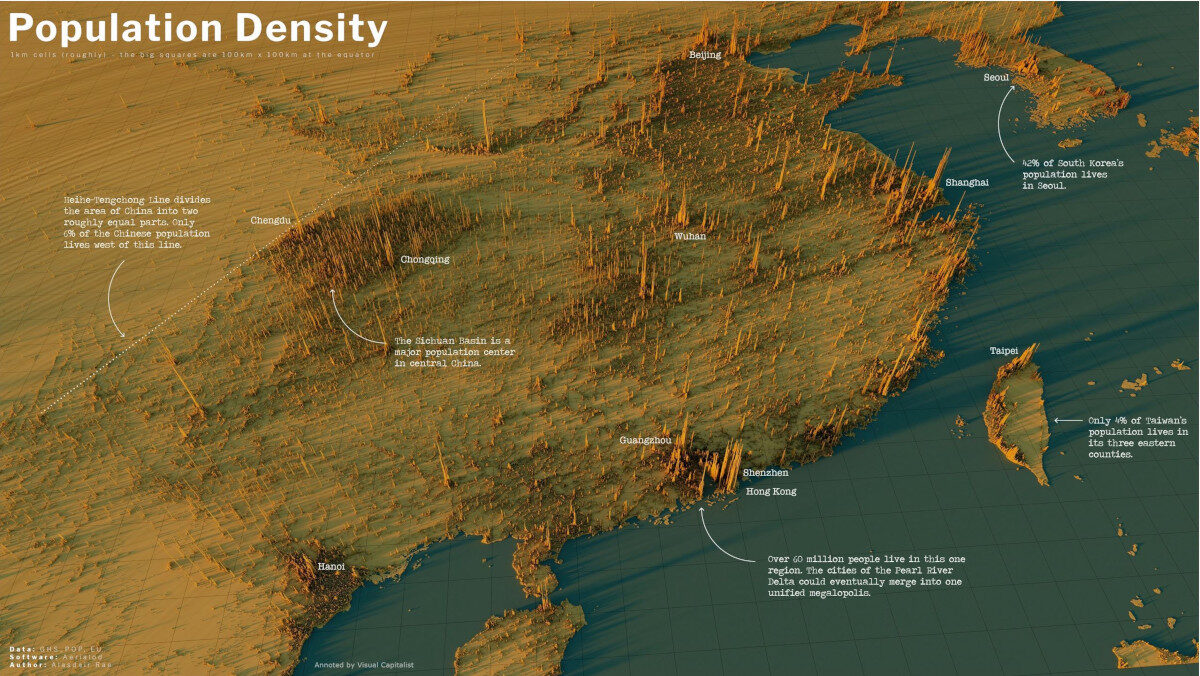
© Visual Capitalist
The incredible Indo-Gangetic Plain is in the foothills of the Himalayas, where the Indus and Ganges flow. So much of human life is determined by the geography of nutrients and water flow. In the foreground is Bangladesh on the Ganges river delta and in the background is the population of Pakistan nearly entirely clustered on the Indus River
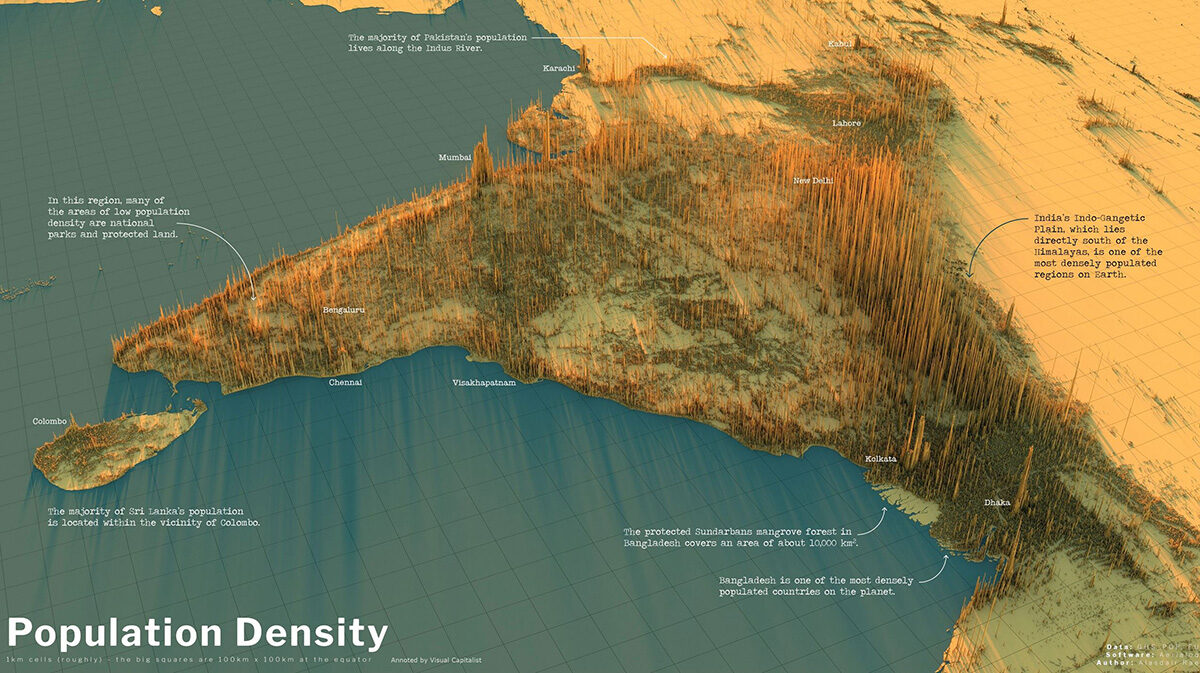
© Visual Capitalist
Recent guesstimates suggest India may now have the largest population in the world, but
no one really knows.
The people of the United Kingdom
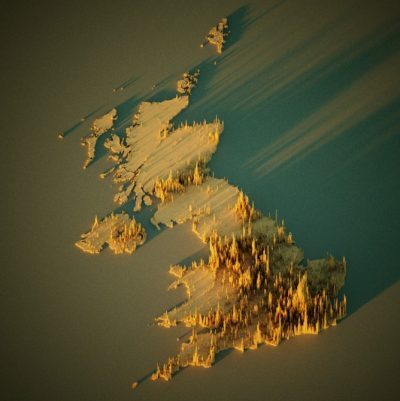
© Visual Capitalist
Under no circumstances should anyone assume humans in the UK want more warmth and sunlight.
The people of EuropeFrom some angles the population appears more evenly spread — perhaps due to the age of the civilization.
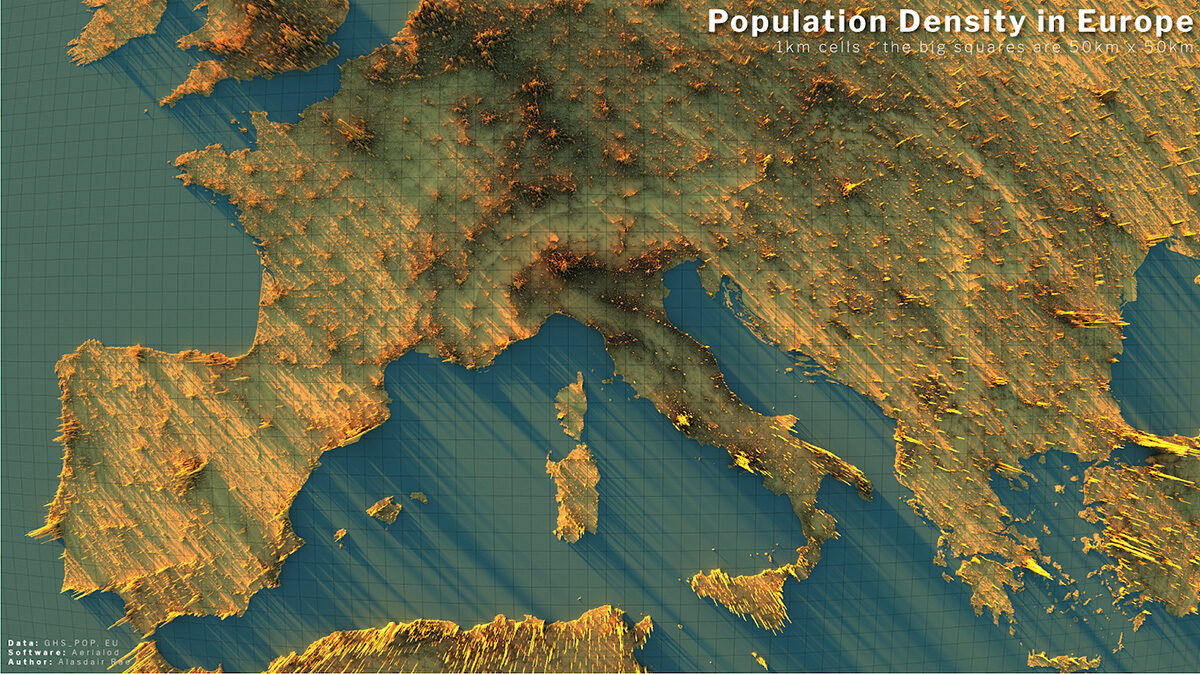
© Visual Capitalist
Though from other angles, there is a remarkable spike at Paris, and a concentration on the rivers flowing from the Alps to the ocean — particularly the Po river of Northern Italy and the Rhine river.
In a sense the map of human population is an anti-map of mountains. We live where the rivers flow.
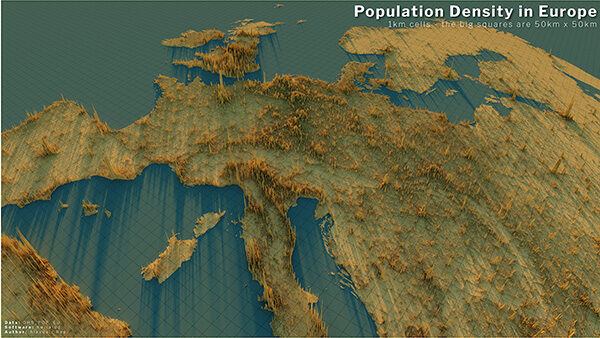
© Visual Capitalist
Unlike previous maps the land areas below are shown under the spikes. Respectively, Australia, New Zealand and Indonesia have
26 million,
5 million and
280 million people. The Philippines has 109 million. Japan, 126 million. And China looms in the top left with possibly 1,400 million.
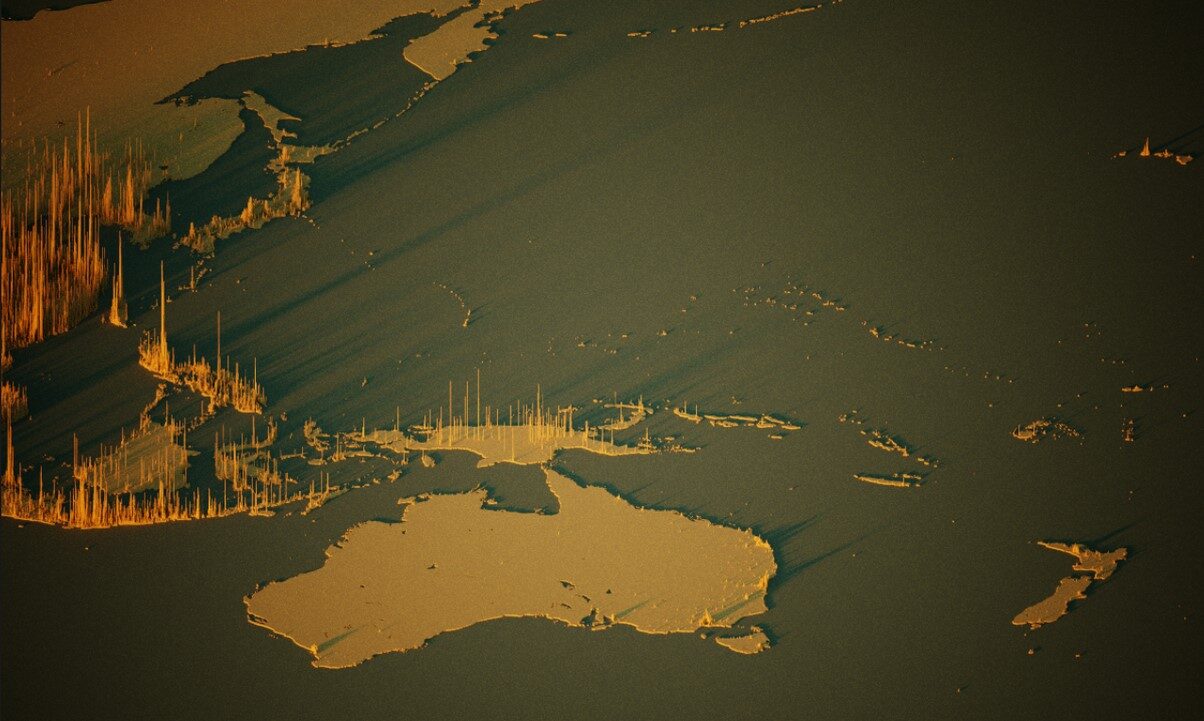
© Visual Capitalist
As for the messages in the data - will the cabal, who intend to rule over all of us, want tropical or temperate? They will want fresh water, of course. Will they want mountains or valleys or plains? And what will they do with those of us already living in their preferred zones? Hmm....